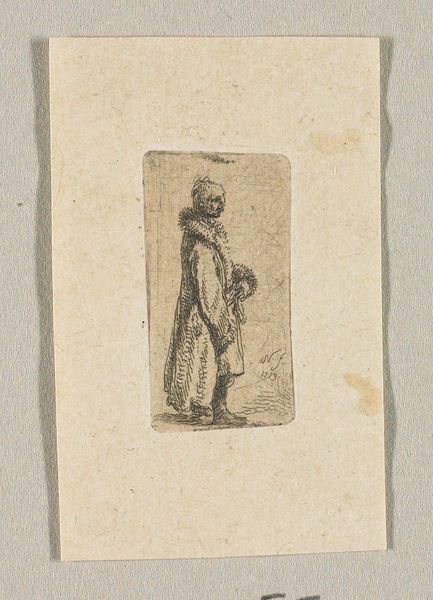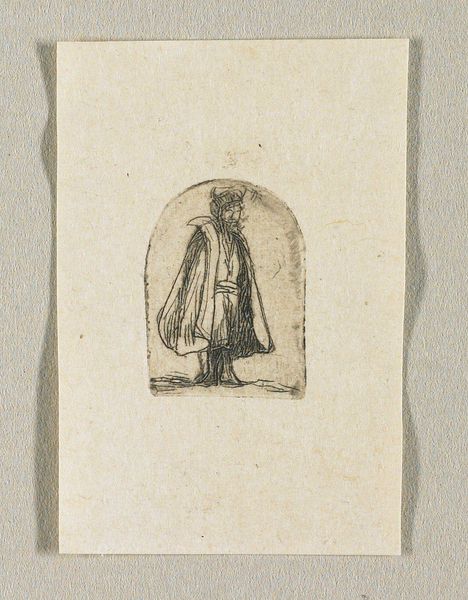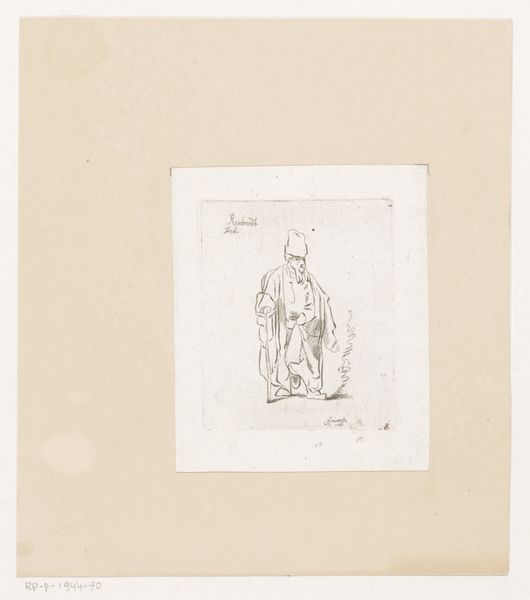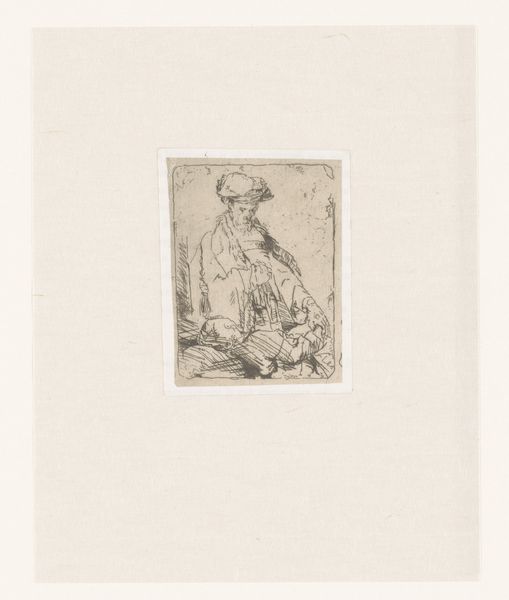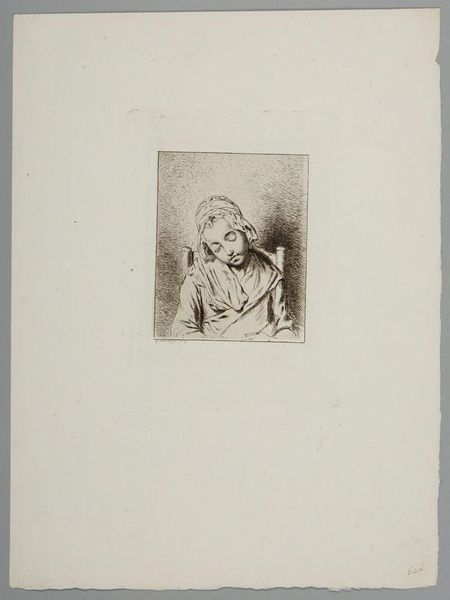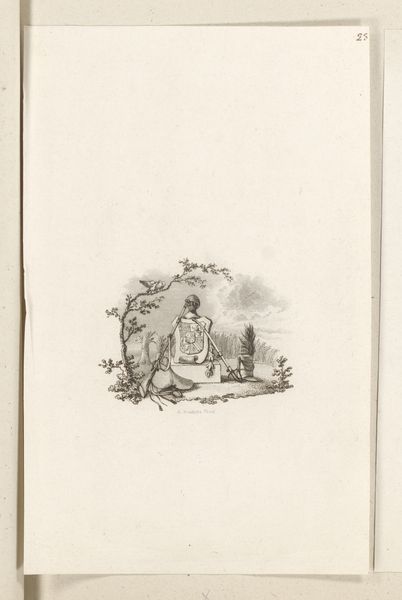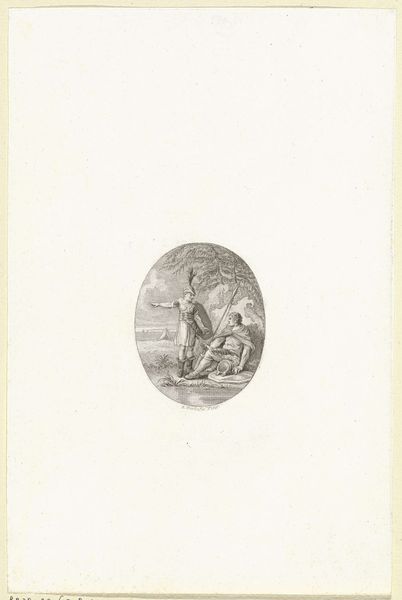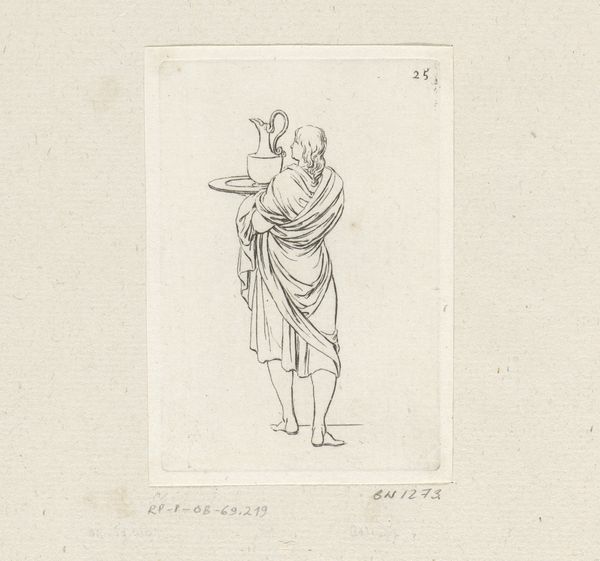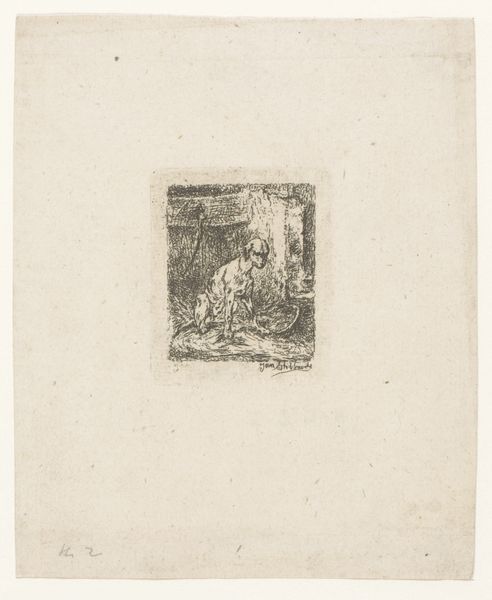
Dimensions: 9/16 x 7/16 in. (1.5 x 1.1 cm) (image)1 9/16 x 1 1/16 in. (4 x 2.7 cm) (sheet)
Copyright: Public Domain
Editor: This is "Kneeling Monk" by Jean-Pierre Norblin de la Gourdaine, dating from 1774 to 1789. It's an etching and drypoint, quite small. It has a rather melancholic feel. What do you make of this piece? Curator: Considering Norblin's historical context, we need to look beyond the solitary figure. Etchings and drypoints like this circulated widely during a time of immense social upheaval. The French Revolution was looming. What role might this image play in that pre-revolutionary climate? Editor: You're suggesting it could be more than just a study of a monk? Maybe it reflects wider societal anxieties about the church or the old order? Curator: Exactly! How was the image itself consumed? Prints were easily reproduced, distributed, and often satirical. Is this monk meant to inspire piety or provoke critique? Think about the potential political weight of such a simple image in the hands of the public. Editor: I hadn't considered it as a political object. The kneeling posture, to me, initially spoke of humility. But now I wonder if that humility is being questioned. Curator: And the starkness of the print method – the lines so clearly defined. Was that meant to reflect sincerity or reveal a deeper, perhaps less flattering, truth? Images are rarely neutral. Whose purposes do they serve? Editor: It's fascinating to think about its distribution and reception at the time. Thank you; this has really opened my eyes to the power that seemingly simple images can wield! Curator: And remember, the history of art is so often the history of power dynamics made visible, or in this case, made reproducible.
Comments
minneapolisinstituteofart almost 2 years ago
⋮
Jean-Pierre Norblin de la Gourdaine was a French painter and printmaker active in Poland in the late 18th century. Norblin's charming miniature etchings, representing mostly male heads, street sellers, and vagabonds, reflect both in subject and technique the profound influence of Rembrandt's prints. Norblin was also drawn to Polish subjects, capturing the unfamiliar, exotic world around him in his depictions of men with colossal fur hats and curled moustaches, Cossacks, and Polish historical figures.
Join the conversation
Join millions of artists and users on Artera today and experience the ultimate creative platform.

